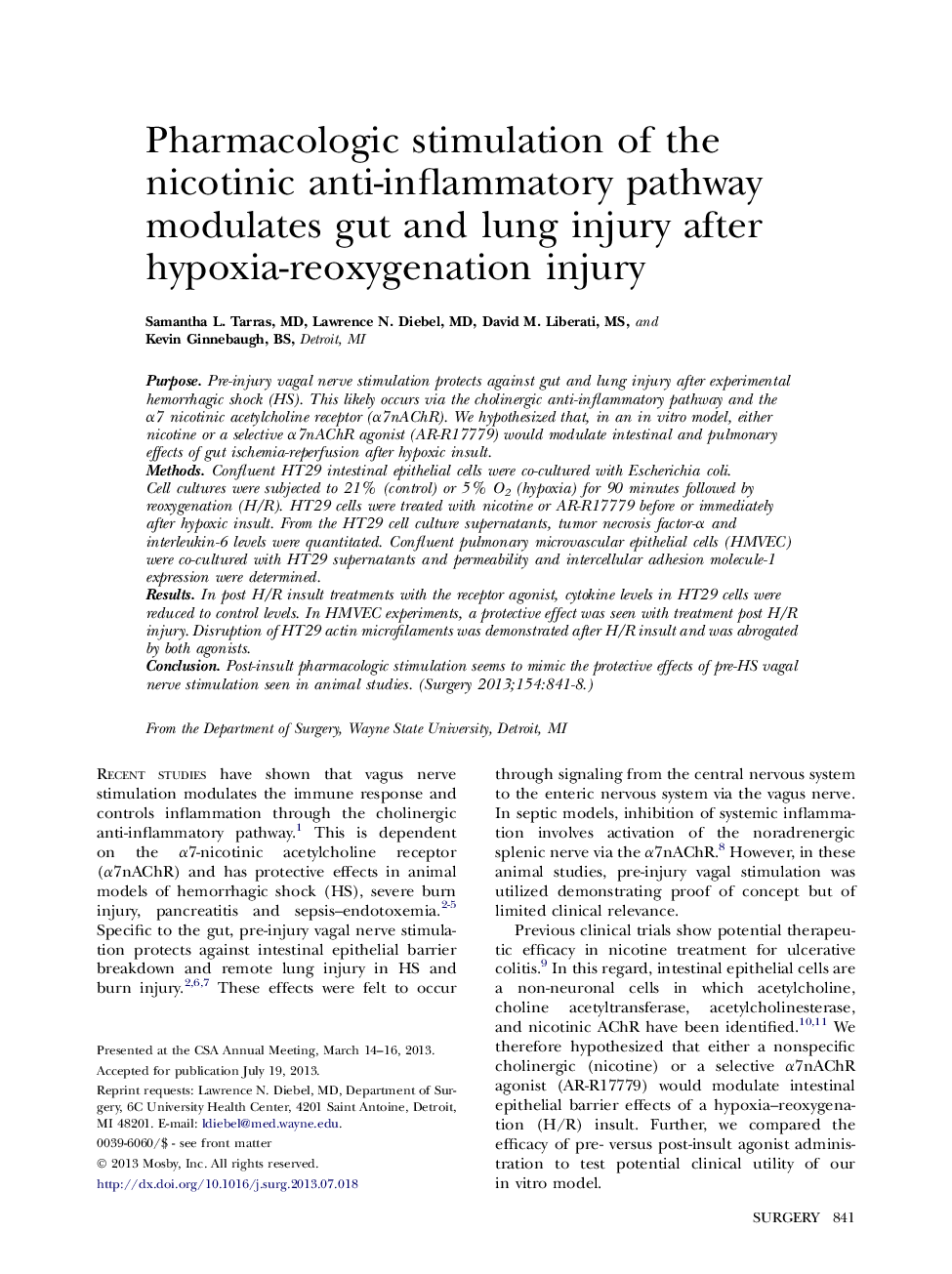| Article ID | Journal | Published Year | Pages | File Type |
|---|---|---|---|---|
| 4307556 | Surgery | 2013 | 8 Pages |
PurposePre-injury vagal nerve stimulation protects against gut and lung injury after experimental hemorrhagic shock (HS). This likely occurs via the cholinergic anti-inflammatory pathway and the α7 nicotinic acetylcholine receptor (α7nAChR). We hypothesized that, in an in vitro model, either nicotine or a selective α7nAChR agonist (AR-R17779) would modulate intestinal and pulmonary effects of gut ischemia-reperfusion after hypoxic insult.MethodsConfluent HT29 intestinal epithelial cells were co-cultured with Escherichia coli. Cell cultures were subjected to 21% (control) or 5% O2 (hypoxia) for 90 minutes followed by reoxygenation (H/R). HT29 cells were treated with nicotine or AR-R17779 before or immediately after hypoxic insult. From the HT29 cell culture supernatants, tumor necrosis factor-α and interleukin-6 levels were quantitated. Confluent pulmonary microvascular epithelial cells (HMVEC) were co-cultured with HT29 supernatants and permeability and intercellular adhesion molecule-1 expression were determined.ResultsIn post H/R insult treatments with the receptor agonist, cytokine levels in HT29 cells were reduced to control levels. In HMVEC experiments, a protective effect was seen with treatment post H/R injury. Disruption of HT29 actin microfilaments was demonstrated after H/R insult and was abrogated by both agonists.ConclusionPost-insult pharmacologic stimulation seems to mimic the protective effects of pre-HS vagal nerve stimulation seen in animal studies.
